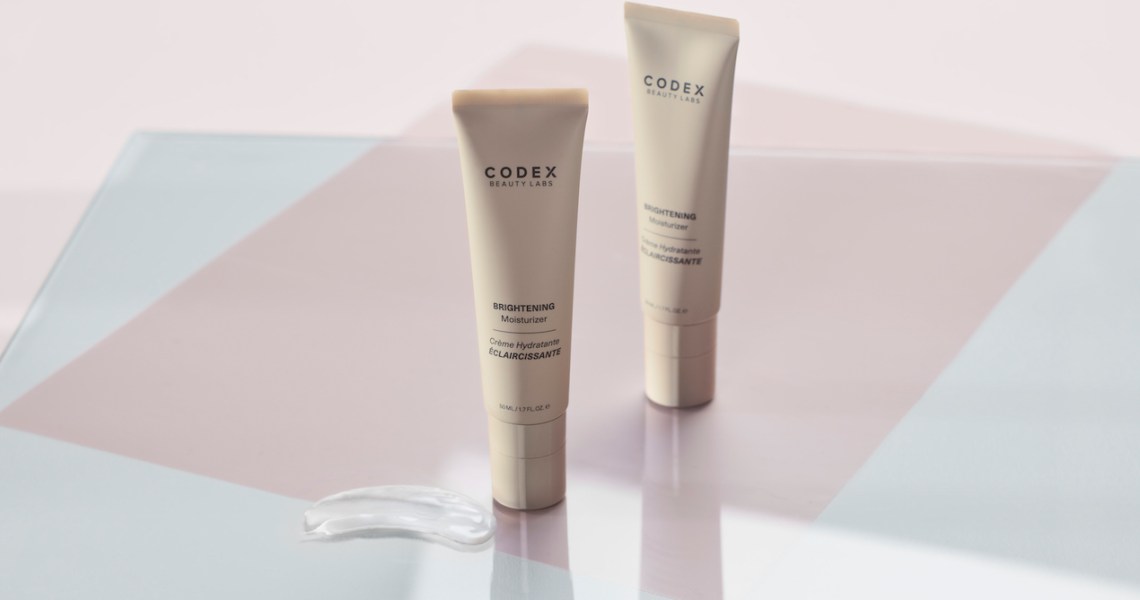To encourage more transparency in beauty, clean skin-care brand Codex Beauty Labs is taking a nutrition label-inspired approach to its products.
The 3-year-old brand introduced on Feb. 1 what it refers to as an “efficacy panel” on its packages. It displays quantifiable data on its ability to address skin concerns like hydration and sebum production, depending on the purpose of the product. On the panel, results are shown for 28 days of using the product, 56 days and 84 days. Codex plans to relaunch its website between Feb. 16 and March 5 (when it launches its new collection, Antü, to combat inflammation) to include the efficacy panels for each product. Barb Paldus, Codex Beauty founder and CEO, said the idea of sharing granular data on usage results stemmed from frustration. Paldus said does not believe the beauty industry shares enough information on formulations and efficacy claims, including how claims are measured.
“We are drawing a line in the sand for every other company to basically say, ‘I’m going to show you mine. Now, you show me yours,’” said Paldus. “Then you can actually start quantifiably improving your products, the price and the value to the consumer.”
Codex received an $8 million Series A in 2019 from Sekhmet Ventures, where Paldus is a founding partner. She allocated $6 million to establishing the brand’s six international subsidiary companies for regulation, manufacturing, sales and logistics. She expects Codex to achieve profitability by the end of 2021.
According to Paldus, Codex has spent $300,000-$500,000 a year to evaluate up to six products per year in clinical trials. Paldus said that clinical studies are benchmarked against Cetaphil and CeraVe products, based on their dermatologist recommendations. However, Codex is unable to disclose this information on its packaging and website legally, as it viewed as an anti-competitive practice, according to Paldus.
Other brands make performance and efficacy claims, however those results are usually not shared publicly. Instead, user experience data is promoted in marketing. In other circumstances, brands may rely on clinical data for active ingredients to demonstrate results, but they won’t share results for the final formulation.
“While this may not be radically new, this is the first time I’ve really seen clinical data put out there to the consumer in such an obvious way on the label,” said Kelly Dobos, president of the Society of Cosmetic Chemists. “Consumer-based studies [are popular] because that resonates with people … and those questionnaire-type measurements are important, because you want consumers to recognize the benefit.”
Ad position: web_incontent_pos1
Prior to the website relaunch, Codex displayed its own user experience data, similar to what other brands provide. For example, in the details section for the Bia Skin Superfood product, it states that self-assessments found that 100% of testers agreed their skin looked “healthier-looking” or that their “skin feels renewed and revived.” Paldus said that was the result of previously working with a marketing team that insisted on its usage.
“When I look at [the efficacy panel] numbers, I have to ask myself, ‘What does this mean to consumers?'” said Perry Romanowski, a cosmetic chemist and founder of the cosmetic chemist resource website Chemists Corner. “Are you going to notice it? Does that have an impact to you?”
Paldus acknowledged the heavy lifting required to educate customers. Some results (such as for desquamation, which means skin flakiness) are stated as a negative figure, even though it means improvement, for example. Codex is predominantly relying on its new website to amplify its messaging and explain the panel. It’s also promoting its messaging on Instagram, IGTV and Facebook through paid and unpaid ads and posts.
“People are afraid of science because they think it’s difficult. But our [point of view] is that science has done a crappy job of explaining itself, because if I can explain it to my 12-year-old, I can explain to anybody,” said Paldus.




